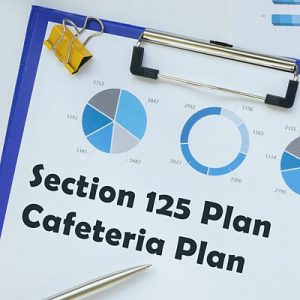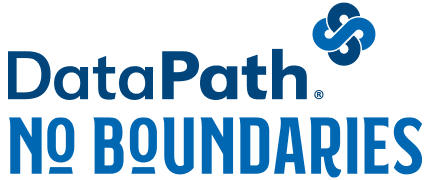
What is a cafeteria plan? Cafeteria Plans are an employer-sponsored benefit that lets employees pay certain qualified medical expenses – such as health insurance premiums for medical, dental, and vision coverage – on a pre-tax basis. They are sometimes called Section 125 Cafeteria Plans.
“Section 125” refers to the portion of the Internal Revenue Code (IRC) that regulates these pre-tax plans. “Cafeteria Plan” reflects the fact that, similar to a lunch cafeteria, you can choose exactly what you want from a variety of options. With cafeteria plans, employees choose the types of healthcare options they want and decline the ones they don’t.
In addition to health benefits, employees participating in a cafeteria plan enjoy lower taxes. Employees contribute to the plan before payroll taxes are calculated on their paychecks. Employers pay less too, since employees only choose the benefits they want, rather than enrolling in everything available.
In addition to tax savings, a major advantage of a cafeteria plan to employees is the range of healthcare options available. Typically, they can use the pre-tax money to pay for health insurance premiums, retirement fund contributions, and other benefit options. Depending on the employer’s plan rules, employees who do not want any of the pre-tax benefits offered may be able to choose alternatives. Alternatives include other, taxable benefits (like supplemental life or disability insurance) and in some cases, even cash.
It’s important to note that a Section 125 Cafeteria Plan does not provide health insurance. Instead, it lets employees use pre-tax money to choose and pay for the insurance coverages most meaningful to them.
Cafeteria Plan Requirements According to Section 125
To qualify as a Section 125 Cafeteria Plan, the employer’s plan must include:
- At least one taxable benefit option; and,
- At least one qualified pre-tax benefit option
One possible taxable benefit option is giving employees the monthly amount as part of their pay, rather than applying it towards pre-tax benefits. For example, with traditional group healthcare insurance, the employer usually pays part of each premium. If an employee does not want the insurance, they do not get the money the employer would have spent on it. Under a Section 125 Cafeteria Plan, though, the employer could choose to offer cash to an employee who declines a benefit that would have resulted in a cost to the employer. If the employee instead spends the money on a different benefit, it may still be tax-free. If the employee keeps the money, though, it becomes additional pay and the employee will pay taxes on it.
Qualified pre-tax benefit options range from health and disability insurance to Flexible Spending Accounts (FSAs), Dependent Care Assistance Plans (DCAP), Health Savings Accounts (HSAs), and contributions toward retirement plans.
The “Big Three” Pre-Tax Benefit Accounts
The following very popular cafeteria plan options help employees gain additional tax and money-saving advantages:
- Flexible Spending Accounts (FSAs). An FSA allows employees to pay for qualified out-of-pocket medical expenses on a pre-tax basis. Owned by the employer, an FSA account does not go with the employee if they leave the company.
- Dependent Care Assistance Plans (DCAP). Also known as a Dependent Care FSA, DCAPs allow employees to set aside up to $5,000 a year pre-tax to pay for child care services up to the 13th birthday. The account allows working parents to save on childcare while they are at work or attending school.
- Health Savings Accounts (HSAs). Like an FSA, HSAs let employees set aside pre-tax money for a wide variety of eligible healthcare expenses. Unlike FSAs, employees own HSA accounts and can take them along anywhere they go.
Benefits to Employers
Cafeteria plans also provide several important advantages to employers, especially small businesses:
- Reduced payroll taxes. Since the taxable portion of employee pay is reduced by their cafeteria plan contributions, the employer’s Social Security, Medicare, Federal unemployment, State unemployment, and Workers’ Compensation costs are also reduced. Many employers use these savings to offset the administrative costs of offering a cafeteria plan.
- Able to offer better benefits packages, which can reduce turnover and help to attract new talent.
- Retain unused account balances. If the FSA and DCAP plans have been set up with the “use it or lose it” option, the employer keeps any unspent funds at the end of the plan year or when an employee leaves the company. This also applies to “carryover” options when balances exceed carryover limits.
Of course, no plan is perfect. Cafeteria plans lock employees into their chosen contributions for a full year. With few exceptions, employees must wait until the next annual enrollment to make changes. If employees don’t use all their FSA funds within the plan year, they may be able to carry over 20% to the next year (if the plan allows FSA Carryover). Also, unused FSA balances may be forfeited if employment status changes.
Cafeteria plans can be a cost-effective benefits strategy for employers. They help businesses save money while keeping employees happy. Due to the complexity of these plans and their compliance issues, employers who want to offer a cafeteria plan should contact a benefits administration professional that specializes in creating and administering Section 125 plans.
For 40 years, DataPath has been a pivotal force in the employee benefits, financial services, and insurance industries. The company’s flagship DataPath Summit platform offers an integrated solution for managing CDH, HSA, Well-Being, COBRA, and Billing. Through its partnership with Accelergent Growth Solutions, DataPath also offers expert BPO services, automation, outsourced customer service, and award-winning marketing services.

